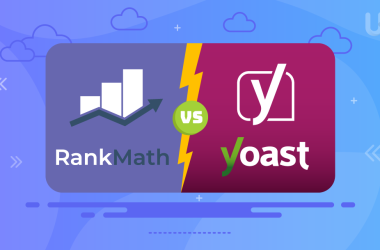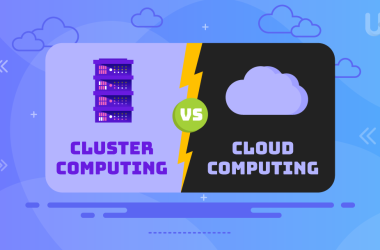As e-commerce grows, choosing the right model becomes crucial. Take a look at a comprehensive overview of affiliate marketing vs dropshipping and make an informed decision. Affiliate marketing involves promoting products on behalf of merchants and earning commissions for successful leads or sales. In contrast, dropshipping sees businesses sell products without stocking inventory, relying on third-party suppliers for shipping.
Whether opting for the performance-based dynamics of affiliate marketing or the inventory-free advantages of dropshipping, understanding these models is key to navigating the dynamics of e-commerce.
Affiliate Marketing vs Dropshipping: Overview
Figuring out how to sell stuff online means getting to know two main ways – Affiliate Marketing vs Dropshipping.
Understanding Affiliate Marketing
Affiliate marketing is a performance-based marketing strategy where individuals, known as affiliates, promote products or services on behalf of merchants. Affiliates earn commissions for each sale, click, or lead generated through their unique affiliate links. Moreover, this model is characterized by its simplicity and low entry barriers, as affiliates focus primarily on marketing efforts without the need for inventory management.
How Affiliate Marketing Works
In affiliate marketing, the process involves affiliates partnering with merchants to promote products through various channels such as websites, social media, or earn from your own blog. Affiliates receive unique tracking links, enabling merchants to attribute sales or leads to specific affiliates. This commission-based structure incentivizes affiliates to drive targeted traffic and increase the conversion rate, creating a mutually beneficial relationship between merchants and marketers.
Pros of Affiliate Marketing
- Low upfront costs
- Minimal operational responsibilities
- No need for product creation or inventory management
Cons of Affiliate Marketing
- Dependency on merchant decisions and policies
- Limited control over product quality and customer experience
Understanding Dropshipping
Dropshipping is a retail fulfillment method where businesses sell products without stocking inventory. When a customer makes a purchase, the product is directly shipped from a third-party supplier to the customer. Moreover, this model eliminates the need for businesses to handle physical products, making it an attractive option for those seeking a streamlined approach to e-commerce.
How Dropshipping Works
Dropshipping involves entrepreneurs setting up online stores, selecting products from suppliers, and marketing them to potential customers. Once a sale occurs, the product is shipped directly from the supplier to the customer. Moreover, this hands-off approach to inventory management allows entrepreneurs to focus on marketing, customer acquisition, and building a strong online presence.
Pros of Dropshipping
- Low initial investment and low risk
- No need for inventory storage or management
- Flexibility to test and scale a wide range of products
Cons of Dropshipping
- Lower profit margins compared to traditional retail
- Dependency on third-party suppliers for product quality and shipping
- Potential challenges in maintaining consistent product availability
Unlock Your E-Commerce Potential
Ready to elevate your online business? Explore the possibilities with Ultahost’s eCommerce hosting solutions. Find the perfect foundation for your digital venture and ensure a seamless and secure online presence.
Head-to-Head Comparison: Difference between Dropshipping and Affiliate Marketing
As entrepreneurs venture into e-commerce, a careful examination of the cost structures, levels of control, scalability, and income potential in affiliate marketing and dropshipping becomes paramount.
Cost Structure
In affiliate marketing, individuals can kickstart their journey with minimal upfront costs, primarily focusing on marketing to promote products for merchants. On the flip side, dropshipping equally boasts a low initial investment, as entrepreneurs channel their resources into creating an online presence and effective marketing strategies without the need to stock inventory.
Affiliate marketing keeps operational costs to a minimum, with affiliates sidestepping the challenges of inventory management, shipping logistics, and customer service responsibilities. Dropshipping, while reducing operational costs associated with inventory, does introduce expenses related to maintaining an online platform and strategic marketing efforts.
Level of Control
Affiliates in marketing have limited control over the products they promote, as these decisions rest with the merchants. Their primary focus is on marketing and driving traffic to the merchant’s offerings. On the other hand, dropshipping entrepreneurs wield more control over product selection, although they depend on suppliers for inventory and quality control.
Affiliates operating within the affiliate marketing model wield minimal control over the overall customer experience, as post-purchase interactions are managed by the merchant. Utilizing a VPS optimized for SEO can further enhance control over website design and performance, ensuring that your affiliate marketing efforts are complemented by a seamlessly optimized online presence. In contrast, dropshipping entrepreneurs can exert more control over the customer experience, from website design to order fulfillment, although customer service may still depend on third-party suppliers.
Scalability
Scaling in affiliate marketing presents challenges due to the reliance on the merchant’s products and decisions. Affiliates may encounter limitations in product variety and availability, impacting their scalability potential.
While dropshipping offers scalability, entrepreneurs may face hurdles in maintaining consistent product availability and managing increased order volumes. Moreover, building and maintaining effective relationships with suppliers become crucial for achieving seamless scalability.
Income Potential
The earning potential in affiliate marketing is intricately tied to the commission structure. Successful affiliates can unlock substantial income by strategically marketing high-converting products and leveraging their audience reach.
Dropshipping provides entrepreneurs with varied income potential, influenced by factors such as product selection, online sales strategies, and profit margins. Earnings can be increased by scaling operations and optimizing online stores for maximum impact.
Factors to Consider When Choosing Drop Shipping vs Affiliate Marketing
Aspiring entrepreneurs standing at the crossroads of dropshipping vs affiliate
must carefully weigh several critical factors to make an informed decision aligning with their unique goals and aspirations.
Personal Preferences and Skills
The choice between affiliate marketing and dropshipping is deeply intertwined with individual preferences and skill sets. Those inclined towards marketing, relationship-building, and audience engagement may find affiliate marketing more appealing, as success hinges on effective promotional strategies. On the other hand, entrepreneurs with a knack for managing online stores, creating digital products, and customer experience might lean towards dropshipping, where control over the storefront and customer journey is more pronounced.
Market and Niche Considerations
Understanding the target market and niche is paramount in selecting the right business model. Affiliate marketing thrives when there’s a diverse range of products to promote within a chosen niche, relying on the affiliate’s ability to connect with a relevant audience. Conversely, dropshipping entrepreneurs must carefully assess market demand for specific products and identify niches where their online store can carve a distinctive presence. A thorough market analysis helps tailor the chosen model to meet consumer needs effectively.
Long-Term Sustainability and Growth Potential
Considering the long-term sustainability and growth potential is crucial for building an online business. Affiliate marketers may need to evaluate the stability and reliability of merchant partnerships, as well as the potential for scaling their promotional efforts. Dropshipping entrepreneurs, on the other hand, should focus on establishing robust relationships with suppliers to ensure consistent product quality and availability. Moreover, assessing the scalability of both affiliate marketing vs drop shipping and their alignment with long-term business goals is vital for sustained success.
Tips for Success in Each Model: Dropshipping vs Affiliate Marketing
As entrepreneurs embark on their chosen path in affiliate marketing or dropshipping, adopting best practices and strategic approaches becomes instrumental in achieving sustainable success.
Affiliate Marketing Best Practices
- Choose Reputable Merchants: Align with trustworthy merchants offering quality products. Reputation matters, and promoting reliable products enhances your credibility with your audience.
- Understand Your Audience: Deeply understand the needs and preferences of your target audience. Moreover, tailor your promotional efforts to resonate with your audience, creating a more genuine and effective marketing approach.
- Diversify Your Promotional Channels: Explore various marketing channels such as blogs, email, and social media strategies to grow your store. Diversification helps reach a broader audience and mitigates risks associated with changes in algorithms or platform policies.
- Disclose Your Affiliate Relationships: Maintain transparency with your audience by clearly disclosing your affiliate relationships. Building trust is essential for long-term success in affiliate marketing.
- Monitor and Analyze Performance: Regularly assess the performance of your promotional efforts. Utilize analytics tools to track clicks, conversions, and other key metrics. Therefore, adjust your strategy based on data to optimize results.
Dropshipping Success Strategies
- Choose Reliable Suppliers: Partner with reputable suppliers to ensure product quality and reliable order fulfillment. Establish clear communication channels and assess supplier reliability before entering into agreements.
- Curate a Niche Selection of Products: Focus on a niche to create a more targeted and appealing product selection. Moreover, a curated product range helps differentiate your store and attracts a specific audience interested in those offerings. Alongside dropshipping, consider on demand printing service for customized products without heavy inventory. This model boosts customer satisfaction, brand loyalty, and expands your business by offering a wider variety of products.
- Optimize Your Online Store: Invest in creating an intuitive and visually appealing online storefront with managed VPS hosting. Optimize product listings, implement user-friendly navigation, and prioritize a seamless checkout process to enhance the overall customer experience.
- Implement Effective Marketing Strategies: Leverage digital marketing strategies such as social media advertising, search engine optimization (SEO), and content marketing to drive traffic to your online store. Strategic marketing efforts are key to increasing brand visibility and attracting potential customers.
- Prioritize Customer Service: Provide excellent customer service to build trust and encourage repeat business. Respond promptly to customer inquiries, address concerns, and strive to exceed customer expectations. Moreover, positive reviews and satisfied customers like and recommend, which contributes to long-term success.
Conclusion
The choice between dropshipping or affiliate marketing stands as a pivotal decision for entrepreneurs. Moreover, each model presents distinct advantages and challenges, appealing to diverse skill sets and business preferences. Whether opting for the strategic promotion of affiliate marketing or the flexibility of dropshipping, success hinges on the understanding of personal strengths, market dynamics, and long-term goals.
If you’re ready to take the next step and explore the world of affiliate marketing with a reliable hosting partner, we invite you to check out Ultahost’s Affiliate Program. Empower your digital journey and transform your passion into profit with a trusted ally by your side.
FAQ
What is the difference between affiliate marketing and dropshipping?
Affiliate marketing involves promoting products for merchants and earning commissions on sales, while dropshipping is a retail fulfillment method where businesses sell products without stocking inventory, relying on third-party suppliers for shipping.
Which model is more cost-effective for beginners?
Both models offer low entry barriers. Affiliate marketing requires minimal upfront investment, focusing on marketing efforts. Dropshipping eliminates the need for inventory, making it budget-friendly for those focusing on online storefronts and marketing.
Which offers better income potential, affiliate vs dropshipping?
Both models offer varied income potential. Affiliate marketers earn commissions on successful sales, while dropshipping entrepreneurs can increase earnings by scaling and optimizing their online stores.
What are long-term sustainability factors to consider in both models?
For affiliate marketing, evaluating merchant stability is vital. Dropshipping entrepreneurs should focus on establishing robust relationships with suppliers for sustained success.










